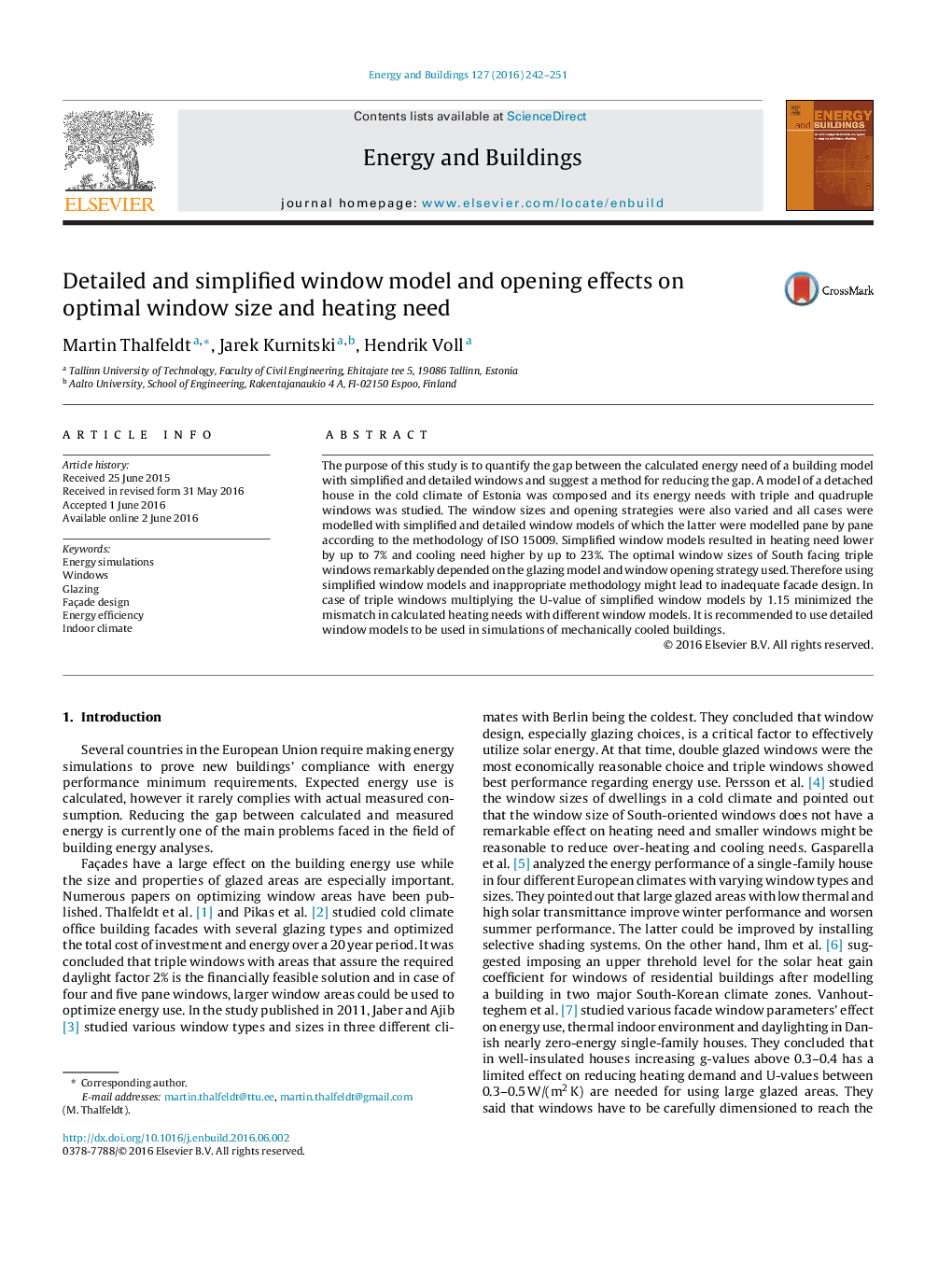| Article ID | Journal | Published Year | Pages | File Type |
|---|---|---|---|---|
| 261978 | Energy and Buildings | 2016 | 10 Pages |
•Detailed triple window modelling increased predicted heating needs by up to 7%.•Detailed triple window modelling decreased predicted cooling needs by up to 23%.•Detailed and simplified quadruple window models resulted in similar energy needs.•Window models and opening strategies caused 20% variations in optimal window sizes.•Multiplying the simplified triple glazing U-value by 1.15 was suggested in Estonia.
The purpose of this study is to quantify the gap between the calculated energy need of a building model with simplified and detailed windows and suggest a method for reducing the gap. A model of a detached house in the cold climate of Estonia was composed and its energy needs with triple and quadruple windows was studied. The window sizes and opening strategies were also varied and all cases were modelled with simplified and detailed window models of which the latter were modelled pane by pane according to the methodology of ISO 15009. Simplified window models resulted in heating need lower by up to 7% and cooling need higher by up to 23%. The optimal window sizes of South facing triple windows remarkably depended on the glazing model and window opening strategy used. Therefore using simplified window models and inappropriate methodology might lead to inadequate facade design. In case of triple windows multiplying the U-value of simplified window models by 1.15 minimized the mismatch in calculated heating needs with different window models. It is recommended to use detailed window models to be used in simulations of mechanically cooled buildings.
